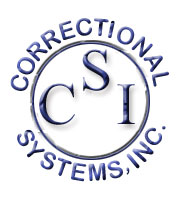

Research Shows Treatment Can Work For Prisoners With a History of Drug Abuse
Contact: James Phillips of the Office of Justice Programs, 202-307-0703
WASHINGTON, Feb. 15 /U.S. Newswire/ -- Prison treatment program and aftercare can be effective in turning drug offenders away from drug use and a life of crime, according to a report released by the National Institute of Justice (NIJ) of programs evaluated in California, New York, Oregon and Delaware. The California program cut the usual 60 percent recidivism rate to about 25 percent."These findings, which are based on rigorous research, provide powerful support for the view that it makes sense to treat a drug abuser's addiction while he or she is in prison," said NIJ Director Jeremy Travis. "When these program participants are released from prison, they are less likely to pose a risk to public safety and less likely to relapse into the cycle of addiction and crime."
The studies showed that the longer inmates stayed in the programs, the greater their likelihood of success. Douglas S. Lipton, author of the report, examined studies of treatment programs operating in several states and found they were remarkably consistent in reducing recidivism among inmates.
California's Amity Righturn program is an example of such a program's success. Approximately one-fourth of the participants who completed the program and the follow-up aftercare were reincarcerated after six months, while more than 60 percent of inmates not treated were reincarcerated.
Substance abusers -- in particular those with severe drug problems -- have contributed substantially to the growth of the prison population and are responsible for a disproportionate amount of crime and repeat offenses. Data from the Drug Use Forecasting Program, which has been testing arrestees for the use of illicit drugs since 1987, indicate that the proportion of offenders testing positive for drug use at the time of arrest is between 60 and 85 percent, depending on the jurisdiction.
Without treatment, many of those offenders will relapse into drug use after release from custody and return to a lifestyle of crime. The report says it makes sense to consider the criminal justice system as a location for treatment because a large proportion of drug users come into contact at one time or another with some part of the system. "While it's true that there has been growth in the percentage of prisoners receiving treatment -- more than 13 percent received treatment in 1991 as contrasted with 4 percent in 1979 -- for the majority of inmates with substance abuse problems, treatment is still not an option," noted NIJ Director Jeremy Travis. "Lipton's report provides a strong impetus for changing that situation."
Lipton reports that the model that seems to produce the greatest benefits is the "therapeutic community" (TC), a treatment protocol in which substance abusers are separated from the rest of the prisoner population to address the myriad problems associated with a lifestyle of addiction.
One of the TC's examined was New York's Stay'n Out, a program first established by recovered addicts who also were ex-offenders. For both men and women in Stay'n Out, recidivism was not only lower than for prisoners receiving no treatment, but also lower for those receiving other types of treatment.
The optimal length of time in the program was nine to 12 months. Stay'n Out participants who remained for this period did better on parole than those who left earlier or stayed later.
Research at several other TC's, including the Cornerstone Program operated by Oregon State Hospital, California's Amity Prison TC, and Delaware's Key-Crest program, showed that participants had lower recidivism rates.
Lipton is a Senior Research Fellow with the New York-based National Development Research Institutes.
The report, The Effectiveness of Treatment for Drug Abusers under Criminal Justice Supervision, is available from NIJ through the National Criminal Justice Reference Service, by calling 800-851-3420 or sending an e-mail to askncjrs@aspensys.com.
Copyright 2002 All Rights Reserved